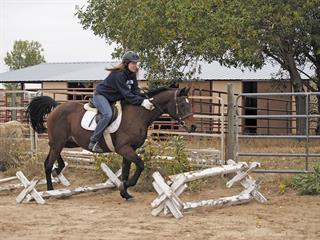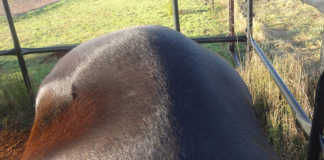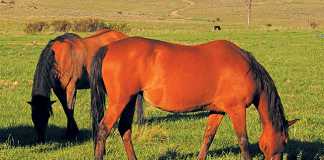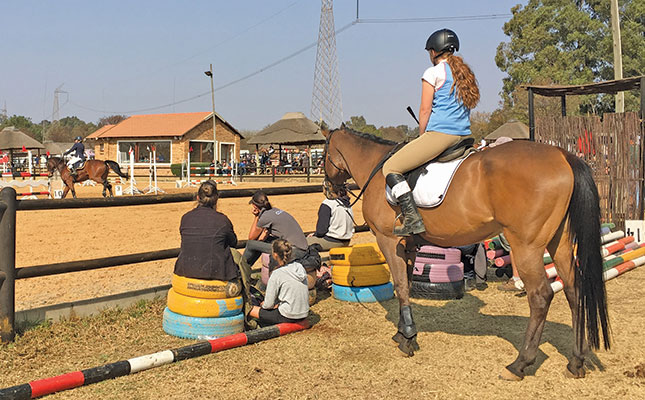
Trotting poles, or cavaletti (small jumps), are used to improve a horse’s technical skills and help with rehabilitation after injury. Traditional trotting poles are heavy 3m-long rails not less than 10cm in diameter. The X-shaped design enables you to raise the trotting pole easily.
Horses clear the poles using increased flexion in all of their limb joints, rather than pushing their body higher off the ground. This means that the vertical force between the hoof and the ground does not increase. Thus, there is no increase in weight-bearing when horses are trotted over poles – an important consideration when overcoming some injuries.
Studies show it is unlikely that the leg’s soft tissues are stressed more when a horse trots over poles than over flat ground.
In training, poles help horses learn how to overcome obstacles more effectively.
During the first few jumps over the poles, they tend to exaggerate their response, lifting their hooves higher than necessary. With more practice, they learn that they do not have to exert so much effort.
This does not mean that the exercise loses its benefits over time. The amount of flexion that the joints undergo is still far greater than that involved in flat work, so the exercise helps increase the joints’ range of motion. Make sure the animal is healthy and does not experience pain during the exercise.
Getting started
I like to work with boxing boots or brushing boots to cut down on the chances of the horse being injured. Never use fewer than three poles, as this simply teaches the horse how to hop! The lunge arena must be at least 22m in diameter. Place the poles between 1m and 1,3m apart for a pony and between 1,3m and 1,5m apart for a standard horse.
First make sure that the horse is comfortable walking over the poles. It is essential to have full voice control when working your horse; it must walk and trot when told to do so.
If you prefer, long-line your youngster over the poles initially. Then mount it and ride over the poles. The speed should be no more than a controlled working trot, and there should be a change of rein every five minutes. Use trotting poles at least once a week (once a day if you are training for a competition). Allow one day a week off.
After two weeks, raise the poles to 5cm off the ground, and repeat the exercise. Increase the lunging to 40 minutes.
After three weeks, raise the poles to 10cm off the ground, and repeat the exercise. By now your horse will be ready to do 60 minutes of lunge work.
After five weeks raise the poles to 15cm off the ground, but keep to a 60-minute lunge session. Once your horse can do the trotting poles at 15cm with no knocking, you can start changing the distance between poles for gymnastic work.
Working free
If you work your horse over the poles with side reins or other training aids, you run the risk of letting it work in a ‘locked’ frame, making it lean on your hands for balance. This will not develop muscles. A horse that has been working comfortably over the trotting poles will develop a strong topline and impressive hindquarter, making it easy to work.
Kim Dyson breeds Arabians and Lusitanos, and has 22 years’ experience in holistic equine and human body work.













